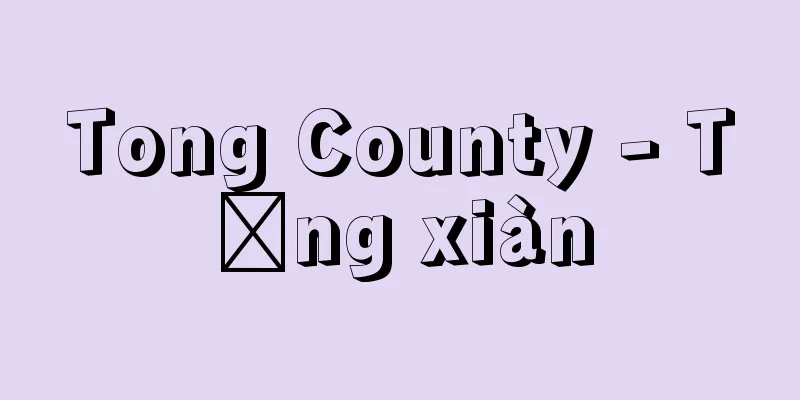Nunakuma Shrine - Nunakuma Shrine

|
Located in Tomo-cho, Fukuyama City, Hiroshima Prefecture. The shrine enshrines Owatatsumi-no-mikoto and Susanoo-no-mikoto. According to the shrine's legend, in the second year of Emperor Chuai's reign, Empress Jingu traveled to the west and sailed west across the Seto Inland Sea. She anchored at the coast of southern Kibi Province and experienced a miracle. She used a sacred stone that emerged from the sea as a sacred seal, set up a shrine, and enshrined Owatatsumi-no-mikoto to pray for safety at sea. Numana means a place where a deep inlet bends in a muddy marsh, forming a round hole, and the shrine's name can be said to come from the god enshrined here. It is a small shrine in the Engishiki, called Tomo Gionsha, and corresponds to the Enokuma shrine in the Bingo no Kuni Fudoki. In 1599 (Keicho 4), the shrine building was moved after a fire, and was later enshrined in the grounds of Gionsha in Tomoura. In 1871 (Meiji 4), it was listed as a small national shrine, and in 1876, Watasu Myojin was enshrined as the main deity of Gionsha, which was enshrined in the same place, and the deity of Gionsha became the deity of the auxiliary shrine, and the current Numakuma Shrine was established. Special rituals are held on the Saturday closest to June 7th of the lunar calendar, the Otebi Festival, and on the Sunday closest to January 7th of the lunar calendar, the Oyumi Festival. The Noh stage was originally located in Fushimi Castle in Yamashiro (Kyoto Prefecture) and is designated as an Important Cultural Property of Japan. [Takahisa Kato] Fukuyama City, Hiroshima Prefecture ©Hiroshima Prefecture "> Numakuma Shrine Source: Shogakukan Encyclopedia Nipponica About Encyclopedia Nipponica Information | Legend |
|
広島県福山市鞆(とも)町に鎮座。大綿津見命(おおわたつみのみこと)、須佐之男命(すさのおのみこと)を祀(まつ)る。社伝によると、仲哀(ちゅうあい)天皇の2年に、神功(じんぐう)皇后が西国へ下向、瀬戸内海を西航したとき、吉備(きび)国南の海辺に停泊して奇瑞(きずい)あり、海中より浮かび出た神石を神璽(しんじ)として斎場を設け、大綿津見神を祀って海上安全を祈念したのが始まりという。沼名前とは泥沼の地に入り江が深く屈曲して隈(くま)をなした地をいい、ここに鎮座した神を社名としたものといえる。『延喜式(えんぎしき)』の小社で、鞆祇園社(とものぎおんしゃ)とよばれ、『備後国風土記(びんごのくにふどき)』の疫隈(えのくま)の社にあてられている。1599年(慶長4)火災にかかり社殿が移転され、のち鞆浦の祇園社の境内に祀られた。1871年(明治4)国幣小社に列せられ、76年当地に祀られていた祇園社の主祭神に渡守明神(わたすみょうじん)が祀られ、祇園社の祭神は相殿(あいどの)の神となって、現在の沼名前神社が成立した。特殊神事として、旧暦6月7日に近い土曜日に御手火(おてび)祭、旧暦1月7日に近い日曜日に御弓(おゆみ)祭が行われる。また、能舞台はもと山城(やましろ)(京都府)伏見(ふしみ)城にあったもので、国の重要文化財に指定されている。 [加藤隆久] 広島県福山市©広島県"> 沼名前神社 出典 小学館 日本大百科全書(ニッポニカ)日本大百科全書(ニッポニカ)について 情報 | 凡例 |
<<: Strip foundation - Nunogiso
>>: Noodles - Noodle (English spelling)
Recommend
Stock price - Kabushiki Kakaku
→Stock price Source : Heibonsha Encyclopedia About...
Standard deviation
Standard deviation can be used in two ways: with ...
Onomasiologic
...Semantics in this case is part of lexicology. ...
Menuridae
…Any of the birds in the family Menuridae, or any...
Manyo plants - Man'yoshukubutsu
This refers to the plants that are written about ...
Pancreatolithiasis
What is the disease? Pancreatic stones are Intrap...
Bleached cotton - Bleached cotton
Bleached raw cotton fabric of small widths. Also c...
Armagnac region - Armagnac region
...Industries such as machinery, aviation, and ch...
Kingdom of Castile and Leon
…Politically, at the beginning of the Reconquista...
Theory of Space Structure - Space Structure
...The same situation applies to Kepler. Moreover...
Athenian - Athena
…He is thought to have lived in the mid-8th centu...
Serbocroatian - Serbo-Croatian (English spelling)
Until the last decade of the 20th century, it was ...
Mahābhārat Lekh
A mountain range stretching for about 800 km from ...
Phragmites japonica (English spelling) Phragmitesjaponica
…[Hiroshi Aramata]. … *Some of the terminology th...
Plum scent - Umega-ka
1. The scent of plum blossoms. " Kishun "...







![Family inheritance - Kazokuseshuzaisan (English spelling) Familienfideikommisse [Germany]](/upload/images/67cb3599b2083.webp)

